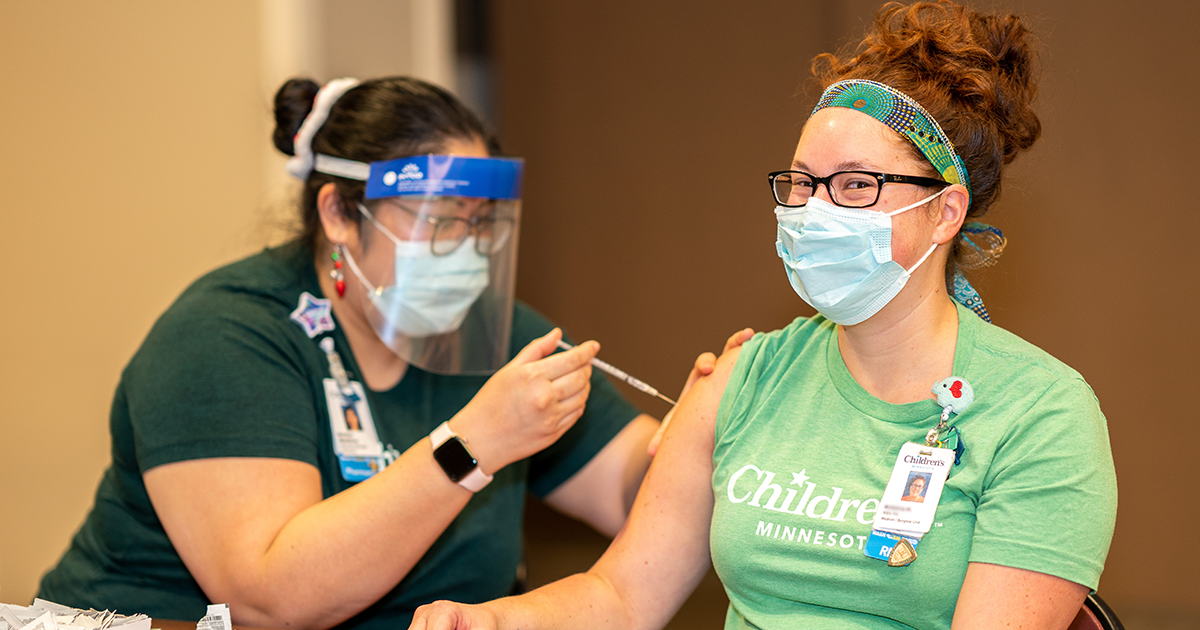Now that some kids are getting vaccinated against COVID-19, most schools will go back to in-person learning this fall. Although many people are vaccinated and numbers of COVID-19 infections are decreasing, not all kids will be vaccinated by the time they head back to school.
We talked with Dory Baker, nurse practitioner in the Children’s Minnesota Asthma Clinic, about tips for kids with asthma going back to school in person this year.
How can I help my child with asthma stay healthy at school?
The most important recommendation we have at Children’s Minnesota is to make sure your child’s asthma action plan is up to date. This will help your child and their school be prepared. Other important reminders:

- Have your child take their daily controller medicine if prescribed by their provider.
- Good hand hygiene continues to be very important. Wash hands frequently and remind kids to keep hands away from their face.
- Some schools may still require wearing a mask, which may help the spread of any illness, including COVID-19.
What should my child with asthma have with them going back to school?
Your child’s school needs to have an updated asthma action plan, a rescue inhaler and a spacer for your child with asthma.
In 2020, the recommendation for taking asthma medicine changed during the pandemic, and that recommendation still stands in 2021. At Children’s Minnesota, we recommend that kids with asthma use inhalers with a spacer instead of a nebulizer.
Why should kids use inhalers instead?
If someone who has COVID-19 uses a nebulizer, it may increase the spread of the COVID-19 virus in the air. Many kids with COVID-19 have few or no symptoms, so they could unknowingly spread the virus to others during these breathing treatments.
Other ways to keep your child’s asthma under control
Know your child’s asthma triggers
It’s important to know your child’s asthma triggers, but also to learn how to avoid them. Triggers make a person’s asthma worse. Being exposed to triggers — for example, viruses, pet dander, exercise, or smoke — can lead to an asthma flare-up and coughing, wheezing, and shortness of breath. But not all kids’ asthma is the same. Different people have different triggers.
Some other triggers include:
- Colds or the flu.
- Irritants (smoke exposure).
- Allergens, or things that cause allergic reactions, like animal dander and pollen.
- Exercise.
Get the flu shot
If your child has asthma and gets the flu, the illness could be much worse for them. They best way to protect them from this is to get the flu shot. The flu shot is safe and effective. Although there is no guarantee that the vaccine will prevent 100 percent of flu symptoms, it can limit the severity and duration of the infection. It may even reduce the chances your child will need to be hospitalized due to the virus.
Teach your child
You can help your child by teaching them about their asthma. Here are a few places to start:
- Basics of asthma.
- Asthma medicines.
- How to use inhalers.
- Asthma triggersand how to avoid them.
- What to do during a flare-up and when to seek help.
See your child’s provider
It’s important to stay up to date with your child’s provider. We recommend visiting their provider every six months for an asthma evaluation.
Children’s Minnesota primary care clinics
Children’s Minnesota’s nine pediatric primary care clinics are conveniently located throughout the Twin Cities metro area so your family can access the best care, close to home. Ask your primary care doctor for the best way to help treat your child’s asthma!
Find the location nearest you, learn about the providers and count on us to help you raise healthy, happy, amazing children.
Schedule your well-child check-up today to help get your child’s asthma under control.